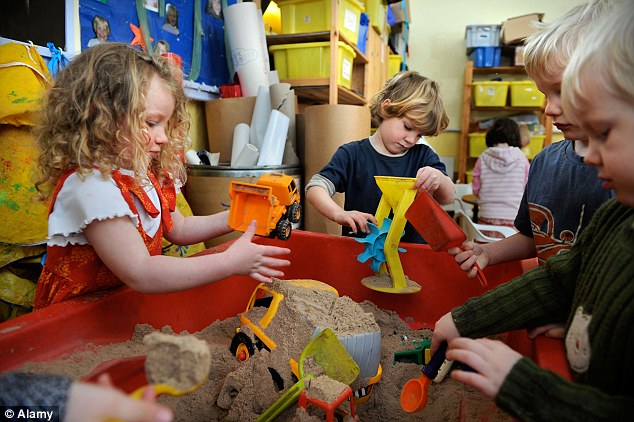Mail Online: How a puff of air helped my little boy avoid endless operations

So when he didn’t respond, I went over to see what was wrong. ‘Don’t you want a go?’ I asked. ‘I don’t know what I have to do,’ he replied. Then it dawned on me – he couldn’t hear a thing.
Missing out on sweeties was the least of his problems. When I spoke to his teachers about it, I discovered he was drifting off during class and seemed to copy what his friends did in PE, rather than listen to the teacher. The Ear, Nose and Throat (ENT) doctor we then saw informed me that he’d even resorted to lip reading.
Finn was suffering from glue ear, which affects 80 per cent of children at some point. This occurs when the Eustachian tube, which links the middle ear to the nose, becomes blocked.
When air cannot flow between the nose and the ear, as it usually does when we swallow or yawn, a vacuum is created. This draws out fluid from the middle ear’s lining, which can then become thick and sticky, leading to impaired hearing.
Children have small, immature Eustachian tubes which are much more prone to blocking. The cause of glue ear is often unknown, but it can be triggered by allergies or ear infections. With Finn, we suspected a genetic predisposition because his father had also suffered as a child.
For most children, the problem is temporary. But for some, like Finn, it remains. A grommet operation followed – a small hole was made in his ear drum and a tiny tube inserted, allowing the fluid to drain. And while a general anaesthetic is something any parent would rather avoid, the results were life-altering.
Bit by bit, my inattentive and very shy child started to come out of his shell. Grommets typically fall out within a year, and the hope is that, by this stage, the Eustachian tube has grown and middle-ear issues have been resolved.
In fact, many children need a second operation. Unfortunately, Finn was one of them. As we reached the 12-month mark, he slowly started disappearing back into a world of his own. We went back to the clinic and tests showed his hearing was bad again. When things failed to improve over a few months, he had a second operation, which worked as well as before.

But a year later, when Finn was nearly eight, the whole cycle started again. Eager to avoid another operation which could potentially cause long-term damage to his ear drum, I researched alternatives.
I subjected Finn to many experiments, including going dairy-free (in case an allergy was the root cause) and using a £7 device known as Otovent, which is a specially designed balloon that a child tries to inflate using their nose.
It’s available on prescription and can relieve middle-ear problems by equalising the pressure. It’s the same idea as clearing ‘popped’ ears on a plane by blowing out while pinching your nostrils and closing your mouth.
But Finn’s hearing loss remained, and, in a state of desperation, I risked £100 on a device called the EarPopper, which I’d read about online.
This small, grey machine looks a bit like a walkie-talkie. It fits in your palm and has a nozzle at the top for insertion into one nostril.
It blows out a stream of air when you press a button – you cover one nostril, point the stream of air up the other one for a few seconds, and swallow a sip of water at the same time. ‘When you swallow, the Eustachian tube opens,’ says Michael Wareing, a London-based consultant ENT surgeon, who uses the EarPopper with some adult patients.
‘Air is then forced up the Eustachian tube into the middle ear, which can allow the fluid to drain, or sometimes the condition will just resolve once the middle ear is properly ventilated.’
You are advised to use the EarPopper twice a day for at least seven weeks.
But in our case, the results were instant. The first time we used it, Finn screamed and ducked for cover when I turned on the EarPopper. It wasn’t the shock of the puff of air up one nostril – it was the sound of our bathroom extractor fan. He hadn’t been able to hear it before, and now it sounded like a low-flying jet!
Unlike the Otovent device, or simply popping your ears by holding your nose and blowing, the EarPopper actively opens the Eustachian tube because you swallow at the same time – and the force of the blast of air from the device helps with ventilation.
Mr Wareing says while he’s had success treating adults with the EarPopper, he has yet to use it on children because it’s a complicated technique for parents to administer. And it won’t work for everyone, he warns, as ‘the causes of glue ear are so varied’.
A trial of the device on 94 children by the U.S. inventors of the EarPopper (Daniel Arick, an ENT consultant, and Shlomo Silman, an audiologist) showed a 74 per cent success rate in restoring hearing compared with 26.7 per cent of the control group, after seven weeks of use, and an 84 per cent success rate after 11 weeks.
For us, it has been a near-miracle. And while it might take a bit of bribery – the process can hurt a little at first – it certainly beats surgery.
No Results Found
The page you requested could not be found. Try refining your search, or use the navigation above to locate the post.